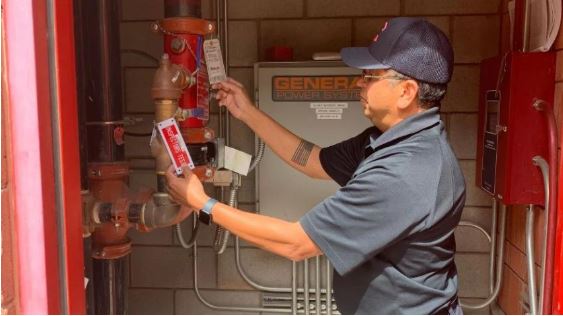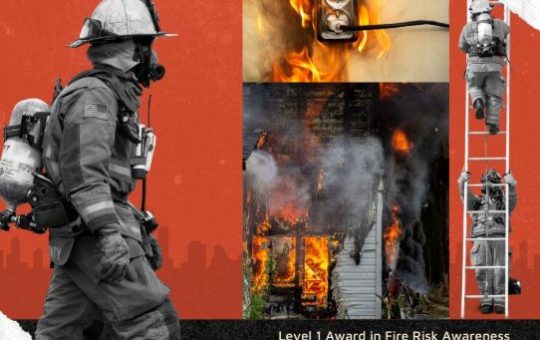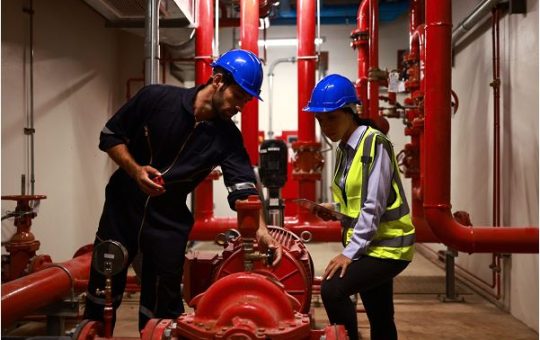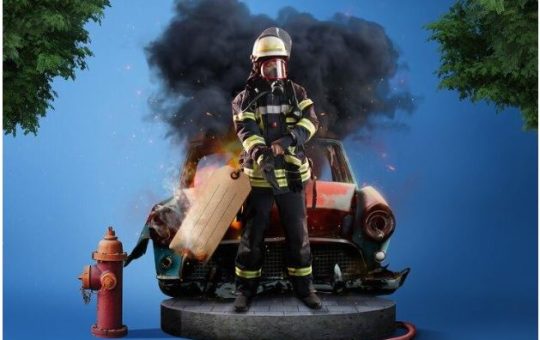
Fire Inspector Level-1
- Foundational Expertise: Build a strong base in fire codes and inspection processes.
- Professional Recognition: Gain a qualification recognized by employers in the safety and fire prevention industry.
- Practical Skills: Learn how to identify and mitigate fire hazards effectively.
- Regulatory Knowledge: Understand and apply fire safety regulations in various environments.
- Understand the roles and responsibilities of a fire inspector.
- Be familiar with fire codes, standards, and regulatory requirements.
- Conduct basic fire safety inspections for compliance with local and international codes.
- Identify common fire hazards in buildings and facilities.
- Document inspection findings and recommend corrective measures.
- Communicate effectively with property owners and safety teams to improve fire safety compliance.
- Job Roles:
- Entry-Level Fire Inspector
- Safety Compliance Officer
- Fire Code Enforcement Assistant
- Further Training:
- Fire Inspector Level 2 (Advanced)
- Fire Risk Assessor Certification
- NEBOSH Fire Safety and Risk Management
- Industries:
- Residential and Commercial Property Management
- Industrial and Manufacturing Safety
- Local Government and Regulatory Agencies
- Pathway to Advanced Roles: Completing this course enables participants to pursue more advanced certifications and specialize in areas such as industrial fire safety, building code development, or fire investigation.
Study Units
The Fire Inspector Level 1 course includes the following modules:
- Introduction to Fire Inspection
- Roles and responsibilities of a fire inspector
- Importance of fire inspections in community safety
- Understanding Fire Codes and Standards
- Overview of local and international fire codes (e.g., NFPA standards)
- Legal and ethical considerations in code enforcement
- Inspection Techniques
- Conducting on-site fire safety evaluations
- Identifying fire hazards in structures and installations
- Fire Protection Systems
- Basics of fire detection and suppression systems
- Ensuring the operational readiness of fire protection equipment
- Hazard Recognition and Risk Assessment
- Spotting fire hazards in building layouts, electrical systems, and storage areas
- Assessing risks and recommending corrective measures
- Documentation and Reporting
- Writing detailed inspection reports
- Maintaining accurate records for regulatory compliance
Upon successful completion of this qualification, learners will be able to:
Understand Fire Inspection Fundamentals: Describe the purpose and importance of fire inspections in maintaining public safety.
Identify Fire Hazards: Recognize common hazards in buildings, facilities, and workplaces that could contribute to fire incidents.
Apply Basic Fire Codes and Standards: Interpret and apply local and international fire safety regulations in routine inspections.
Conduct Fire Safety Inspections: Perform basic on-site evaluations of fire safety systems, exits, and protective measures.
Assess Compliance: Determine whether facilities meet fundamental fire code requirements and recommend corrective actions.
Understand Fire Protection Equipment: Identify the function and basic operation of fire alarms, extinguishers, and suppression systems.
Document and Report Findings: Record inspection results clearly and prepare concise compliance or corrective reports.
Communicate Effectively: Collaborate with property owners, safety officers, and emergency personnel to promote fire safety awareness.
Demonstrate Professional Conduct: Follow ethical and procedural guidelines while conducting inspections or interacting with stakeholders.
The Fire Inspector Level 1 Course is designed for individuals beginning their career in fire inspection, fire prevention, or workplace safety. It provides the essential foundation needed to understand fire safety principles and perform basic inspections in accordance with legal and organizational requirements. It is ideal for:
Aspiring Fire Inspectors entering the field of fire safety and code enforcement.
Health and Safety Assistants or Officers who wish to broaden their understanding of fire inspection.
Facility Supervisors and Maintenance Staff responsible for ensuring compliance with fire safety standards.
Security and Emergency Response Personnel assisting in fire prevention and risk control.
Local Government or Municipality Staff involved in building safety oversight.
Employees in Residential, Commercial, or Industrial Facilities seeking fundamental fire safety knowledge.
Individuals Pursuing a Fire Safety Career Path, aiming to progress toward Level 2 or Level 3 fire inspector qualifications.
Our assessment process is designed to ensure every learner achieves the required level of knowledge, skills, and understanding outlined in each course unit.
Purpose of Assessment
Assessment helps measure how well a learner has met the learning outcomes. It ensures consistency, quality, and fairness across all learners.
What Learners Need to Do
Learners must provide clear evidence that shows they have met all the learning outcomes and assessment criteria for each unit. This evidence can take different forms depending on the course and type of learning.
Types of Acceptable Evidence
Assignments, reports, or projects
Worksheets or written tasks
Portfolios of practical work
Answers to oral or written questions
Test or exam papers
Understanding the Structure
Learning outcomes explain what learners should know, understand, or be able to do.
Assessment criteria set the standard learners must meet to achieve each learning outcome.
Assessment Guidelines
All assessment must be authentic, current, and relevant to the unit.
Evidence must match each assessment criterion clearly.
Plagiarism or copied work is not accepted.
All learners must complete assessments within the given timelines.
Where applicable, assessments may be reviewed or verified by internal or external quality assurers.
Full learning outcomes and assessment criteria for each qualification are available from page 8 of the course handbook.
Top Courses
Related Courses
Let's Get in touch
Deleting Course Review
Course Access
This course is password protected. To access it please enter your password below:



